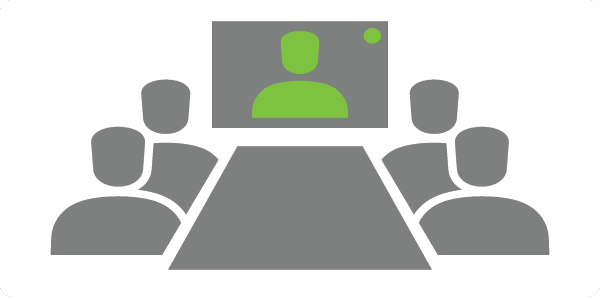What happens after the live webinar is even more important than what happened before it. It’s a great opportunity to generate additional leads, drive evolutionary engagement, plan how to improve the next event, and repurpose your webinar into additional content pieces.
Here are seven ways to get the most out of your webinar investments:
1. Post and promote the on-demand recording
Many marketers generate just as many leads with the on-demand version of the webinar as they do with the live one. Here’s how they do that:
- Once the event is complete, post the on-demand recording the next day and send an email letting both attendees and those who missed your webinar know that the on-demand version is up for viewing.
- Make sure that your team promotes the webinar via email and social media for the next 30 to 60 days. Your first emails should be sent to thank the people who attended, and to let those who signed up but didn’t attend know that they still have a relationship with you.
- After that, make the on-demand webinar a call to action in a blog post on a closely related topic, or offer it in a newsletter. A steady cadence of social media updates on Twitter and LinkedIn will also drive additional prospects to the webinar.
Note: If you’re doing webinars regularly, it’s an excellent idea to have an events resource center with on-demand recordings available, and notifications of upcoming events.
2. Follow up with the leads
Have a defined, step-by-step follow-up plan for the leads you get from the webinar. Most webinar platforms let you see who attended and how long they stayed with it. This is great data for behavioral lead scoring. For example, of three registrants, one could be a no-show; one could have tuned in, then dropped off after five minutes; the third might have stayed all the way through and asked a question in the Q&A section. That third attendee is the one showing the most interest, and should be scored accordingly.
The data from the event not only helps sales and marketing prioritize follow-up, it provides a great opportunity to customize and personalize your approach.
There are two basic lead categories:
- Leads who signed up for the webinar and attended.
- Leads who signed up for the webinar but did not attend.
The most common practice is for sales to follow up with leads who attended the webinar and closely resemble the ideal buyer persona. Marketing may typically follow up with the rest, but in some cases sales may also want to follow up with the non-attendees, using a different talk track than they use with attendees. In most cases, both types are well-served by email-based nurturing tactics.
3. Inform sales about the event
If sales is following up on all of the webinar leads, make sure they’re prepared with information about the webinar, such as the topic, the presenter, and key messages and take-away. You could go so far as to provide sample follow-up scripts, and/or email templates.
4. Develop blog posts using content from the webinar
You can use poll results, event recaps, and the presenter’s answers to questions as the foundation for numerous blog posts. If you write a blog post based on the questions that didn’t get answered during the webinar, you can include it in a future email to those prospects who attended so they can get answers to their questions.
5. Create more content based on the webinar
You can also use the content created for the webinar as the basis of a whitepaper or eBook. This can be created using an edited transcript of the event and the presenters’ slides as the foundation. You may also be able to create an infographic, a podcast, or a SlideShare presentation.
6. Measure the results
Now that the webinar has taken place, you can measure the number of attendees and/or leads it generated, as well as other secondary metrics. Just remember that if you published an on-demand version of the event, it will help increase your visibility and may continue to generate leads for you over time. In fact, many webinars generate just as many leads from the on-demand version as the live version. Think about dong a post-event survey to ask attendees what they liked and didn’t like; you could also ask about topics they’d like you to address. This can help you create webinars people actually want to attend, or feel a bit vested in.
7. Plan your next webinar
It’s easier to be successful with webinars if you host them regularly. You get better at producing them, and your promotions take on a cadence that people expect. And you can draw better speakers.
You could start with one per quarter, then build up to a webinar every month. A regular schedule of well-crafted webinars will increase your visibility, increase engagement, and increase results.
Be sure to debrief with your team to determine how you did and how you can improve the next event. Discussion points:
- Did you get the number of attendees you hoped for?
- Which promotion channels worked best?
- Did the calls-to-action in your follow-up emails work?
- How many conversions did you get, of what kind?
- Did your speaker deliver?
Look at your performance reports. Were people interested and engaged? Did they stay for the whole presentation? Can you pinpoint where the content held or lost viewers? These insights can help you improve in your quest to create successful webinars.
